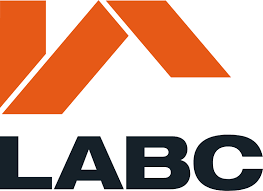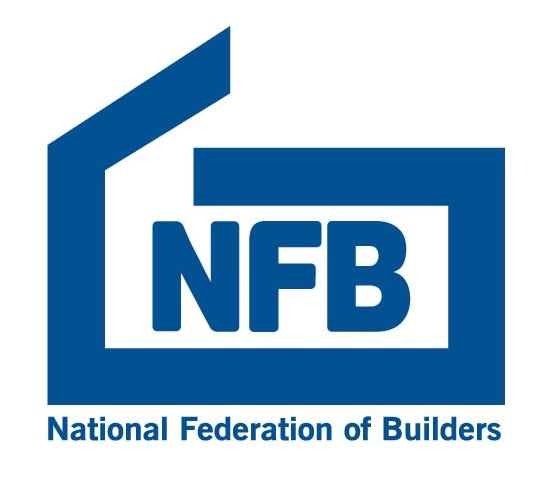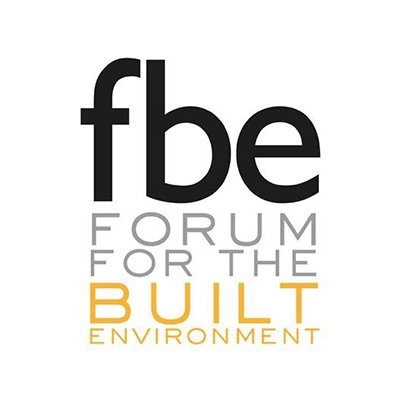Our challenging missions and theme group objectives – to add value to the construction process, to address the climate crisis, to enhance quality and compliance, to drive innovation and best practice to adopt Smart construction, and to procure on value – or all crying out for innovation.
This month, Martyn Jones asks if we need a new innovation model or framework to help us shape and implement the innovations needed to fulfil these missions and deliver the objectives of our theme groups.
Innovation models help us by providing frameworks or templates to identify, evaluate, advance, and implement ideas and focus on the strategies needed to create the value we are seeking.
From the 1990s onwards our thinking on innovation has been influenced by Roy Rothwell, a British sociologist, a pioneer in industrial innovation and innovation management. He viewed innovation as a multi-factor process which was instigated and sustained through the formation of networks and alliances based on collaboration and more creative relationships.
This chimed, of course, with the ethos and culture of the Constructing Excellence movement. But that was then and this is now, so will Rothwell’s model still cut the mustard given the change in context and the scale of the challenges and opportunities we now face?
Some argue we need to transition from Rothwell’s 5th generation model, as it was termed, to a new 6th generation model of innovation management – the open innovation model.
Open innovation challenges the idea that creativity must come from within an organisation or its network of suppliers, or indeed a particular industry. Instead, organisations pursing open innovation seek external ideas wherever they exist with an ‘outside-in’ and ‘inside-out’ approach sourcing ideas from external sources as well as internal ones.
It is about utilising the purposeful inflows and outflows of knowledge to accelerate innovation internally and externally whilst also expanding the market opportunities for the external adoption of the innovation.
It means sharing knowledge and information about problems and looking to people both inside and outside the organisation and its conventional or orthodox supply chains for ideas and possible solutions and new market opportunities.
Instead of the secrecy and silo mentality of much traditional thinking, open innovation invites a wider group of people to participate in problem-solving and product and process development.
According to Henry Chesbrough, an American organisational theorist, “open innovation is a more distributed, more participatory, and more decentralized approach to innovation”, arguing that this decentralised approach opens up access to external knowledge and new ways of thinking and doing things. It gives businesses and organisations the ability to access new (and sometimes ‘left-field’ or unusual) ideas for new products and services.
But organisations need to manage the process closely, making sure it is consistent with their purpose, missions, and brand values, and recognising that it requires a shift in culture that can take a lot of time and effort to instigate and manage effectively.
It requires a different approach to project management with organisations needing to let go of the idea of ownership and control of current processes and be open to external paths for new technologies, processes, and new sources of innovation.
Open innovation can be adopted in different ways. It is shaped by context, the nature of the industry or sector, the innovation trajectories of the organisation and its network of suppliers, and their appetite for involving external parties.
It might start with Intrapreneurship, a way of finding and supporting innovative talent within our own organisations or businesses. Encouraging and supporting individuals to act more like entrepreneurs, to be more self-motivated, curious, proactive, and action-oriented people with the initiative to pursue an innovative product or service.
And it can be adopted by applying 5th generation principles beyond the organisation’s boundaries, setting key partners in their network of project partners, suppliers, and specialist contractors, innovation challenges to gather ideas, collectively find solutions and create new markets.
Looking outwards beyond our normal network of suppliers, forging partnerships with startups is another way to work together to find a solution to an identified problem. Startups are companies founded to develop a unique product or service, bring it to market and make it irresistible and irreplaceable for customers.
An extension of, and more proactive approach to partnering with startups, is to establish startup incubators or accelerators. This is like a partnership, but also involves the more established organisation investing equity in the startups and their ideas.
From a Constructing Excellence perspective, co-creation labs are an interesting concept associated with open innovation. These are ‘places’ dedicated to innovation, with the resources, mentoring, and knowledge needed to explore challenging questions and exploit opportunities.
Such labs can be either internal to an organisation or perhaps more fruitfully convened externally involving clients, customers, suppliers, startups, and other potential partners.
And we have done it before: The Bristol CE Club’s Specific Innovation Clusters and its Here to Learn workshops have demonstrated how the CE movement can bring together people with diverse ideas and knowledge to creatively tackle issues and shape new ideas.
Construction businesses from across Shropshire and beyond have been urged to play their part in helping to deliver a multi-billion pound programme of projects planned for the region.
Plans to regenerate Shrewsbury’s Riverside area and the flagship Station Quarter development in Telford were just two of the key opportunities outlined to more than 100 business representatives attending the Project Pipeline event on March 22, at Theatre Severn in Shrewsbury.
The major event hosted by Shropshire Constructing Excellence, the Constructing Excellence Midlands Shropshire Club, attracted companies operating across the sector – from housing developers to sub-contractors and civil engineers to main contractors.
Mark Barrow, chair of Shropshire Constructing Excellence and executive director of place at Shropshire Council, told delegates that construction was fundamental to supporting growth in the Shropshire economy.
He outlined a draft pipeline of key projects in housing, transportation, education, health and the environment totalling £5.58billion by 2032 and estimated the potential economic impact of such developments to be in the region of £16.29billion.
Speaking after the event, he said: “It’s been great to see such a fantastic turnout and to see so many ambitious organisations looking forward to grasping opportunities locally to grow their own business.
“We want to understand how we can help these people achieve success.
“We do great things in Shropshire and we need to work together more to create and leverage opportunities for as many businesses as possible and that’s what these networking and knowledge-building events are all about.”
The event also heard from Katherine Kynaston and James Dunn, directors at Telford & Wrekin Council, about the ongoing construction opportunities in relation to the flagship Station Quarter project which is set to provide new education, housing and business facilities.
Matt Laws from event sponsor Shrewsbury Colleges Group gave an overview of the wide range of training courses on offer to the construction industry including its new Higher Technical Qualifications and the newly created shorter, modular courses which aim to support industry professionals with flexible and creative learning.
“Our aim is to provide a relevant and responsive training provision which meets the skills the industry needs. The construction sector is a priority sector for us with a specific focus on the environment and technology.
“We are so much more than a college that supports young people. We are working to support the sector and many of our courses have been developed in partnership with businesses working across construction.”
Harpreet Rayet, of Cornovii Developments, updated the event on STAR Housing’s successful retrofit project near Oswestry, sustainability plans and SAP calculations, whilst Andrew Carpenter, from Constructing Excellence Midlands, also explained how the organisation works together with SCE for the benefit of construction businesses.
The event also provided an opportunity for delegates to network and build new partnerships.
Project Pipeline event host, Amy Bould, managing director of Be Bold Media and committee member of SCE, said: “It was fantastic to see so much appetite from businesses wanting to be involved with so many great projects and developments and we look forward to our next event which will be just as informative and engaging for those working across the sector.”
In October 2020, Ravensdale Infant and Nursery School in Mickleover, Derby, was the victim of a devastating arson attack that left the majority of its structure and contents in ruin. Overnight, 296 children aged three to seven, found themselves without their school once again, having only just returned from lockdown.
Working in close collaboration with Morgan Sindall Construction, Lungfish Architects and other key stakeholders, Derby City Council accessed SCAPE’s Regional Construction Framework – one of the most efficient procurement and delivery programmes available to rebuild the school in the shortest timeframe possible.
The Installer Show caught up with Andrew Carpenter, Chief Executive of CE Midlands to find out about the role of CEM and how it is looking to overcome the housing crisis in the Midlands.
What is the goal of Constructing Excellence Midlands?
CE is a membership organisation that aims to drive excellence within the sector through innovation and collaboration. Membership is open to the entire supply chain and provides companies and individuals with the opportunity to influence the industry, network and exchange knowledge with like-minded organisations. We also provide a platform to engage with strategic research partners to help inform solution development and gain insight that you wouldn’t gain elsewhere.
At CE Midlands, our membership increased by 50% in 2023, highlighting the value that companies are placing on involvement with CE Midlands and the knowledge and insight that can be gained through membership.
What is the biggest issue that CEM is looking to address in the Midlands?
One of our key areas of focus in the Midlands is the creation of affordable housing. Development in this area is crucial as not only are we already in the midst of a housing crisis, but the population continues to grow rapidly with a diverse set of needs. So, there is a pressing requirement for not just affordable housing, but sustainable, inclusive and community-centric housing solutions. In turn, this growing demand is highlighting the urgent need that we have in this country for more effective housing policies.
In 2022 we set up a CE Midlands forum to deal with the specific issue of Social Housing sector, concentrating on the Future Homes Standard, which is open to all our members to join. Since then, the forum has welcomed a series of industry speakers who have each instigated lively debate and discussion with many valuable take aways available for those present, as well as providing an occasion for valuable networking opportunities for those working in this field.
What are the challenges when it comes to creating more affordable housing in the Midlands and elsewhere?
There are many challenges that need to be overcome. For example, the industry-wide skills shortage – both in terms of quantity and quality – especially in the wake of the Building Safety Act where competency levels are being brought into question. With an aging population and rising housing costs, we are seeing growing demand for multigenerational housing, meaning bigger homes need to be built. Add to that the need to consider accessibility and other varying social and cultural needs within the housing design. Finally, even if we could build more housing, there’s the issue of whether our outdated infrastructure could support it: would the electrical grid be able to supply a sudden influx in new housing stock in the area? There’s more to it than just building homes, they need to be well-designed, well-built and the surrounding infrastructure needs to be able to keep up with rising demand.
How can these challenges be overcome?
A forward-thinking and collaborative approach to housing is paramount. We need to inspire conversations and foster a shared commitment to creating a housing landscape that truly serves the diverse and evolving needs of the region’s residents.
There is huge potential for collaboration between the Government, private entities and local communities in order to drive community engagement and investment. We need to bring in initiatives that empower residents, encourage affordable cohesion and prioritise the creation of vibrant, sustainable neighbourhoods. After all, housing is much more than just bricks and mortar!
Of course, we must also embrace digital transformation, as innovations like smart infrastructure, sustainable design, and data-driven solutions can contribute to the development of more efficient and responsive housing that will continue to meet the evolving needs of its residents over time.
At CE Midlands, we are also advocating for the streamlining of regulatory processes in areas like planning, and the incentivising of sustainable development, to create an environment where affordable housing can grow and thrive.
You have also been working to engage young people on this issue through CEM’s Generation4Change (G4C) network. Can you tell us about that?
CE originally came into being on the back of a government report from 26 years ago, which said the industry was too fragmented and adversarial – a sentiment we have seen alluded to again recently in Dame Judith Hackett’s report. So, to continue to inspire collaboration, we introduced G4C with the idea that if we could create an arena for young construction industry professionals to collaborate with their peers, then collaboration would become their raison d’être, ready for when they became the leaders of tomorrow.
So, G4C is a national network that young professionals can use to connect, challenge and shape the future of the industry. Our G4C group in the West Midlands get together once a month with a guest speaker and once a quarter for a CPD session. They have also been arranging their own regular socials which is great to see! We currently have 300 young professionals attending G4C West Midlands events and activities, with such success that a G4C network is now being launched in the East Midlands based on the West Midlands model. I highly encourage young people from the sector who are interested in these issues to get involved in their local G4C group and start making a difference in their area.
For more information about the Installer Show here: InstallerSHOW 2024 – Constructing Excellence Midlands
Nottingham City-based construction businesses can now benefit from a new offering including free mental health awareness training by getting involved in the ‘Workplace Healthy Minds Champion’ programme by Nottingham City Council.
There is a growing need to support the mental health and wellbeing of employees in workplaces across Nottingham City and so Workplace Healthy Minds is taking action to change people’s attitudes and behaviour around mental health and wellbeing in the workplace.
The programme will support Nottingham City employers by:
- Encouraging organisations to make a public commitment to supporting employee mental health.
- Advising employers on collecting and recording information on mental wellbeing and tracking the success of interventions e.g. via mental health needs assessments, staff surveys, or organisational temperature checks.
- Providing support to line managers/senior leaders to facilitate conversations about mental health and effectively embed mental health into organisational policy, strategy, and values.
- Developing a communications plan for workplace engagement with national campaigns and events such as Mental Health Awareness Week and Time to Talk Day.
Could you be a Workplace Healthy Minds Champion?
We are also working to Identify a network of city-wide workplace mental wellbeing champions. Champions will take action to raise awareness of mental health in workplaces across the city, encouraging a culture of positive mental health across their organisation. Training will be provided, and support given to develop a mental health and wellbeing action plan, led by the needs of employees.
Who can get involved?
We are particularly interested in working with small-medium sized organisations (<250 employees) that work in the following sectors:
- Construction
- Hospitality
- Retail
However it’s not essential that you work in these sectors
How do I find out more?
More details about how to get involved will be shared here very soon. In the meantime, if you would like to express an interest in being a Workplace Healthy Minds Champions, please fill in the attached form:
Nottingham Workplace Healthy Minds Champions – Expression of Interest
This month marks two years since the Building Safety Act (BSA) introduced a new enhanced regulatory regime for building safety and construction products,
This followed in the wake of the Dame Judith Hackitt’s report, ‘Building a safer future,’ in which she made clear that we needed to adopt a very different approach to our regulatory framework for higher-risk buildings (HRBs).
In responding to this new, more rigorous regime, Martyn Jones argues that this will drive change in our culture and behaviours and its effect may well extend beyond the BSA’s current application to residential HRBs (containing at least two residential dwellings and over 18m or seven storeys in height), hospitals and care homes.
The BSA sets out ways in which we can secure the safety of people in and around buildings, improve building standards and regulate our industry in line with best practice principles
It is introducing a set of new duty holder roles and responsibilities to ensure a stronger focus on building safety, that are now impacting on all stakeholders in construction projects.
The Building Safety Regulator (BSR) is now the central body for controlling HRBs with a process that will require robust record-keeping by the duty holders – Principal Designers and Contractors and Principal Accountable Persons – of all changes made to detailed previously signed off plans.
There are three project gateway points to focus and strengthen regulatory oversight by requiring duty holders to show to the BSR that plans are detailed and robust and that the understanding and management of building safety is appropriate.
Gateway 2 is particularly significant in that the applications made must contain sufficient information to show how the works (when complete) will satisfy all the applicable functional requirements of the building regulations before construction can begin. And demonstrate how construction will be effectively managed so that the work carried out is as described in the original application.
Other documents that need to be submitted at Gateway 2 include a competence declaration from the developer to the employer, a construction control plan, a change control plan, Building Regulations compliance statement and a fire and emergency file.
Each building will have a Golden Thread of information, kept digitally and readily accessible to people throughout a building’s life cycle, providing transparency of information and an audit trail.
In achieving the laudable aims of the BSR we should take the opportunity to rethink our procurement practices, to shift from our traditional operating system to ones more supportive of collaborative behaviours and to link the design, construction, operation, and maintenance of HRBs in a more holistic and seamless way.
What key behaviours will be needed?
Let’s start with leadership and the commitment needed to align with and support the BSR’s Mission to protect people and places. And their Vision to create a built environment where everyone is competent and takes responsibility to ensure buildings are of high quality and safe, so that residents and other building users are confident that the failures of the past will not be repeated.
Then there’s the need for learning to demonstrate and underpin competency, which is now a legal requirement for new duty holders, hence the current wave of courses and learning aimed at Principal Designers and Constructors and Principal Accountable Persons.
This growing competency needs to be placed alongside the openness, integrity, discipline, and meticulousness demanded by the new control processes. This means working effectively through clarity of tasks, having clear information flows, transparent decision-making norms and practices, and effective management of projects and supply chains.
It’s about being able to behave and work in a controlled way, complying with rules and standards.
Then there’s the dynamism necessary to embrace the change by proactively and adaptively pursing the new opportunities, and at the necessary pace.
Alongside this can be added the drive, the persistence, and the resilience to confront the resistance to change that we know lies ahead.
In recognition of how interdependent we are in construction and the level of uncertainty and complexity in most projects, we need to collaborate through the building of relationships based on shared learning, competence trust and inclusion, mutual advantage, and support for each other.
Yes, embracing the BSA will offer us a more effective regulatory and responsibility framework, but also a chance to reconfigure our operating system with clearer roles, duties and responsibilities, standards, and guidance. And also, to grasp the opportunity to rethink the way we have all too often worked in the past, and shift from opacity to transparency, from ambiguity to clarity, and from fragmentation to integration.
Welcome to our April Newsletter.
As we embrace the challenges and opportunities of 2024, Constructing Excellence Midlands stands at a pivotal point. We are more committed than ever to steering the Midlands construction industry towards a future defined by resilience, innovation, and true collaboration.
Confronting Industry Challenges with Bold Leadership
The feedback from our community has been clear, the times are demanding, and the industry’s tendency towards adversarial relationships and traditional, often ineffective, procurement methods are more pronounced in challenging economic conditions. CE Midlands is poised to address these challenges head-on, advocating for a shift that prioritises long-term sustainability and genuine partnership over short-term gains. But haven’t we always advocated this, what’s different?
Our resolve is to not only continue advocating for collaboration but to redefine it in a manner that resonates with the current landscape. We are exploring new avenues to facilitate this through our Clubs, Theme Groups and our fantastic G4C network, all of which are accelerating at pace. We’re leveraging cutting-edge technologies and methodologies that foster a culture of open communication, shared objectives, and mutual benefits. Our aim is to make collaboration not just a buzzword, if that’s the right term as this ‘buzzword’ has hung onto its buzz for 30 years, but a tangible practice that drives projects towards excellence, efficiency, and innovation.
Enabling Change Through Technology and Best Practices
CE Midlands is embracing and moving with the times, our focus is sharpening on how new technologies and approaches can support a more sustainable, innovative, and collaborative narrative. From digital twins and BIM to modular construction and sustainable materials, we are at the forefront of research, guidance, and leadership on these aspects and many more. This approach not only aids in overcoming the current market adversities but also prepares our members and the wider industry for future challenges and opportunities.
Championing a New Era of Construction
The path ahead is challenging yet filled with untapped potential. In my new role as Deputy CEO, I am deeply committed to championing initiatives that bridge the gap between current practices and the visionary future we aspire to. This includes tackling the industry’s reluctancy to deviate from familiar, yet outdated practices, and guiding our community towards embracing change with confidence and optimism.
In these persistently turbulent times, our collective effort to push the boundaries of what is possible in construction has never been more critical. CE Midlands is dedicated to driving this change, ensuring that our members are equipped, supported, and inspired to lead the industry towards a future where collaboration and innovation are not just ideals, but realities.
Together, we are not just navigating the challenges of here and now, we are shaping the construction industry for tomorrow.
















